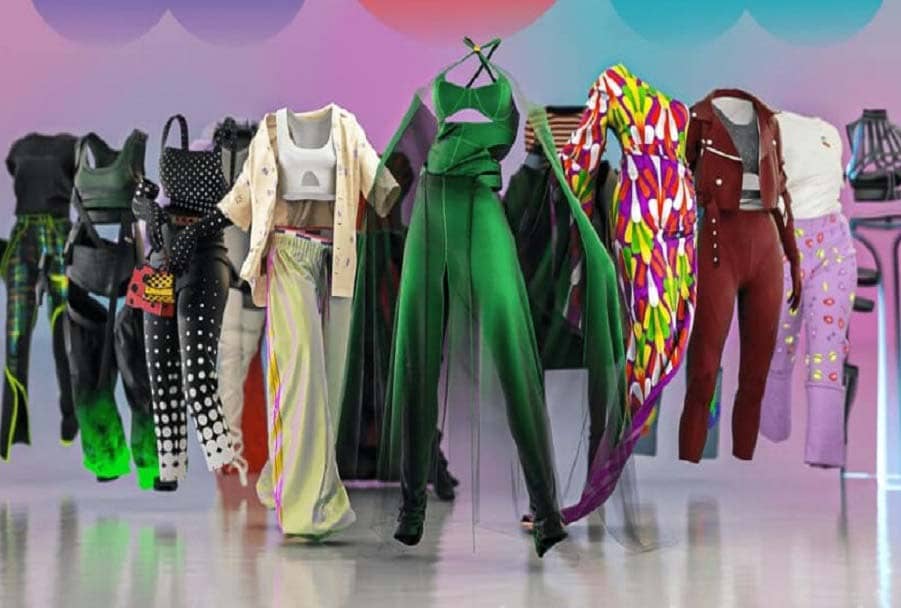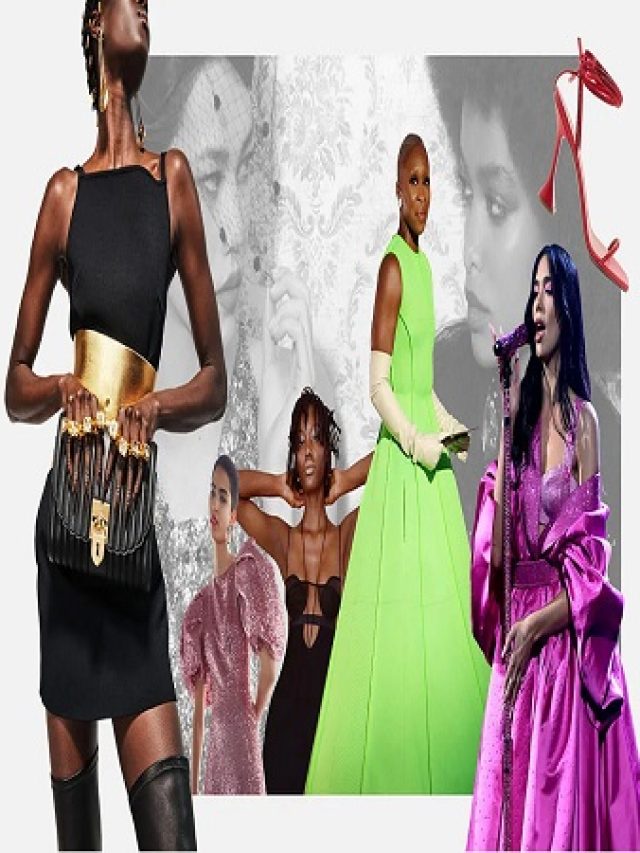Fashion designers stand as the visionary architects of style, blending artistic flair with technical expertise to craft clothing and accessories. Their role encompasses a multifaceted array of responsibilities, weaving creativity, functionality, and innovation into every design.
Overview of Fashion Design Education
Embarking on a journey as a fashion designer often involves enrolling in formal education programs. These programs offer a comprehensive understanding of various elements:
- Design Fundamentals: Understanding colour theory, texture, pattern-making, and garment construction techniques forms the bedrock of a designer’s education.
- Textiles and Materials: Familiarizing oneself with fabrics, their properties, and suitability for diverse designs is fundamental.
- Fashion History: Delving into the historical evolution of fashion cultivates an appreciation for past styles, influencing contemporary trends.
- Computer-Aided Design (CAD): Proficiency in CAD software facilitates the translation of ideas into digital renderings and prototypes, a critical skill in modern design processes.
- Business and Marketing: Gaining insights into the business side of fashion, encompassing marketing strategies, branding, and consumer behaviour, is vital for success in the industry.
The Fusion of Creativity and Technical Skills
Fashion design education nurtures a symbiotic relationship between creativity and technical proficiency. It equips individuals not only with the ability to ideate innovative designs but also with the practical skills to execute them seamlessly.
The blend of creative vision and technical expertise is what distinguishes a proficient fashion designer.
Is Fashion Designing Easy?
The Challenges and Rewards
The allure of fashion design often masks the arduous path that aspirants undertake. Contrary to popular belief, the journey to becoming a fashion designer is a demanding one, requiring dedication, perseverance, and resilience.
Addressing Misconceptions
While the glamour associated with the industry is undeniable, the reality involves:
- Intense Competition: The industry is fiercely competitive, demanding a unique blend of talent, innovation, and business acumen to stand out.
- Continuous Evolution: Staying relevant in an industry characterized by rapid changes in trends and consumer preferences necessitates constant adaptation and reinvention.
Embracing the Rewards
Despite its challenges, the world of fashion design offers unparalleled rewards:
- Creative Fulfillment: The joy of seeing one’s creations come to life and making an impact in the world of style is immensely fulfilling.
- Global Influence: Fashion designers wield the power to shape cultures, influence trends, and contribute to societal shifts through their designs.
- Endless Possibilities: The industry provides diverse career paths, from haute couture to ready-to-wear, allowing designers to explore their niche.
Which Subject is Best for Fashion Designing?
Navigating the Educational Path
In the pursuit of a career in fashion designing, the choice of subjects plays a pivotal role in shaping a designer’s skills and creative approach.
Importance of Design Fundamentals
Design fundamentals form the backbone of a designer’s education:
- Colour Theory: Understanding the psychology of colours and their harmonious combinations is essential in creating visually captivating designs.
- Texture and Pattern-making: Mastery in manipulating textures and patterns adds depth and uniqueness to creations.
Exploring Textiles and Materials
A profound understanding of textiles and materials is indispensable:
- Fabric Knowledge: Familiarity with fabrics’ characteristics, durability, and drape allows designers to make informed choices.
- Sustainability: In recent times, an emphasis on eco-friendly and sustainable materials has become increasingly significant in the design process.
Embracing Fashion History
Fashion history serves as a wellspring of inspiration:
- Periodic Styles: Studying different eras aids in interpreting historical aesthetics and infusing them into contemporary designs.
Embracing Technology with CAD
Proficiency in Computer-Aided Design (CAD) is a modern-day necessity:
- Digital Prototyping: CAD software enables designers to create precise digital prototypes, streamlining the design process.
Fostering Business Acumen
Understanding the business side of fashion is as crucial as the creative aspect:
- Market Trends: Analyzing market trends and consumer behaviour aids in creating designs that resonate with the audience.
An amalgamation of these subjects forms a comprehensive foundation for aspiring fashion designers, empowering them to navigate the industry’s intricacies.
Fashion Designer Career: Profitability and Prospects
The Lucrative Side and Future Opportunities
The fashion industry offers a spectrum of opportunities, with potential for both financial success and personal fulfillment.
Analyzing Career Prospects
- Diverse Career Paths: Fashion designers can venture into various niches, including haute couture, ready-to-wear, costume design, and accessory design.
- Global Reach: With the advent of e-commerce and globalization, designers can showcase their creations to a worldwide audience.
- Emerging Fields: New domains such as sustainable fashion, tech-integrated apparel, and experiential fashion are opening novel avenues.
Evaluating Financial Potential
- Earnings: Salaries vary widely based on factors like experience, specialization, and geographic location. Established designers often earn substantial incomes.
- Independence: Launching a successful label or brand can lead to substantial financial independence and recognition.
Navigating the Future
- Technological Integration: The industry continues to evolve with advancements in technology, offering opportunities for innovation and efficiency.
- Sustainability: The rising emphasis on eco-conscious fashion presents avenues for designers passionate about sustainability.
The Blend of Creativity and Commerce
Fashion designing is a dynamic field that requires a harmonious blend of artistic vision and business acumen to capitalize on emerging trends and opportunities.
Fashion Designer Drawing: The Artistic Core
The Significance of Sketching
Drawing serves as the foundational language of a fashion designer, bridging imagination with tangible designs.
Translating Ideas into Reality
- Visual Communication: Sketching allows designers to articulate their visions and concepts visually, aiding in effective communication with collaborators and manufacturers.
- Creative Exploration: Sketching fosters a space for experimentation and innovation, allowing designers to explore diverse ideas and iterations.
Sketching in the Creative Process
- Initial Conceptualization: Sketches often serve as the initial blueprint, capturing the essence and aesthetics of a design idea.
- Refinement and Iteration: Through multiple sketches and revisions, designs evolve and refine, honing in on the final concept.
Embracing Modern Tools
- Digital Rendering: With technological advancements, digital sketching tools have gained prominence, offering precision and flexibility in design creation.
- Augmented Reality (AR) and Virtual Prototyping: Emerging technologies enable designers to visualize and test designs in virtual spaces before physical production.
The Artistic Journey
Drawing remains at the heart of fashion design, transcending traditional mediums and embracing innovative tools, guiding designers from initial inspiration to the final runway collection.
Fashion Designer Qualifications: Building a Foundation
Educational Routes for Aspiring Designers
Fashion design education offers various pathways tailored to individual preferences and career goals.
Formal Education
- Fashion Schools: Acquiring a degree from accredited fashion schools or universities specializing in design offers structured curricula and hands-on experience.
- Specialized Courses: Short-term courses or workshops focusing on specific skills like pattern-making or textile design serve as supplemental education.
Apprenticeships and Internships
- Hands-On Experience: Working under established designers or fashion houses provides invaluable practical knowledge and mentorship.
- Industry Exposure: Internships allow aspiring designers to gain insights into the industry’s inner workings and build professional networks.
Continuous Skill Enhancement
- Professional Development: Engaging in continuous learning through workshops, seminars, and online courses keeps designers updated with industry trends and techniques.
- Portfolio Development: Cultivating a strong portfolio showcasing diverse designs and technical skills is essential for career advancement.
Seeking Accreditation and Recognition
- Certifications: Acquiring certifications or memberships from industry-recognized bodies or associations enhances credibility and opens doors to opportunities.
Personal Attributes and Skills
- Creativity: A designer’s ability to ideate and innovate forms the bedrock of their success.
- Attention to Detail: Precision in design and an eye for detail are critical for creating impeccable designs.
- Adaptability: Flexibility and adaptability to evolving trends and technologies are imperative in the fast-paced fashion industry.
Building Blocks of Success
Combining formal education, practical experience, continuous skill development, and personal attributes lays a robust foundation for aspiring fashion designers to flourish in the competitive industry.
Fashion Designer Online: Digital Resources and Platforms
The Digital Sphere in Fashion Design
The proliferation of online resources has revolutionized the way designers learn, create, and showcase their work.
Online Courses and Tutorials
- Skill Enhancement: Platforms offering courses in design software, pattern-making, and fashion business empower designers to hone their skills.
- Flexibility: Online courses provide flexibility, allowing designers to learn at their own pace and convenience.
Design Software and Tools
- Digital Design Suites: Access to design software enables designers to create, edit, and visualize their designs digitally.
- Virtual Prototyping: Tools for virtual prototyping allow designers to test and refine their creations in a simulated environment.
Online Communities and Networking
- Collaborative Spaces: Online forums and communities facilitate collaboration, idea-sharing, and networking among designers worldwide.
- Professional Networking: Platforms dedicated to fashion professionals enable networking, collaboration opportunities, and industry insights.
E-Commerce and Digital Showcases
- E-Commerce Platforms: Designers can showcase and sell their creations globally through online marketplaces, bypassing traditional retail barriers.
- Digital Runways: Virtual fashion shows and digital runways offer designers alternative platforms to present their collections to a global audience.
The Digital Revolution
Online resources and platforms have democratized access to learning, networking, and showcasing, empowering designers to navigate the industry’s nuances and expand their reach globally.
Women in Fashion Design: Shaping the Industry
Celebrating Female Voices
The fashion design landscape boasts an array of influential and pioneering women who have left an indelible mark on the industry.
Contributions and Influence
- Iconic Designers: Women designers like Coco Chanel, Elsa Schiaparelli, and Vivienne Westwood have revolutionized fashion with their innovative designs and unique perspectives.
- Entrepreneurial Spirit: Many women have not only excelled in design but also in entrepreneurship, establishing successful fashion labels and brands.
Evolving Role and Perspectives
- Breaking Stereotypes: Women designers have played a pivotal role in challenging stereotypes and reshaping fashion norms through their designs.
- Diversity and Inclusivity: Female designers have advocated for diversity and inclusivity, promoting representation across sizes, ethnicities, and cultures.
Influence on Contemporary Trends
- Fashion Icons: Women designers have influenced iconic styles and fashion movements, contributing to the evolution of trends over the years.
- Social and Cultural Impact: Through their designs, female designers have often addressed social issues, cultural nuances, and women’s empowerment.
Shaping the Future
The contributions and influence of women in fashion design continue to shape industry standards, trends, and perspectives, paving the way for future generations of designers.
Exploring the Dynamic Realm of Fashion Designers
Fashion design epitomizes the fusion of creativity, innovation, and craftsmanship, offering a multifaceted journey into the world of style and self-expression. Throughout this exploration, we’ve uncovered various aspects integral to the domain of fashion designers.
A Multifaceted Journey
- Education and Expertise: The study of fashion design encompasses diverse subjects, nurturing the artistic vision and technical skills required for success.
- Challenges and Rewards: The path to becoming a fashion designer demands dedication, resilience, and a harmonious blend of creativity and commercial acumen.
- Career Prospects and Innovations: The industry presents lucrative opportunities while embracing technological advancements and emerging trends.
- Artistry of Drawing: Sketching remains the cornerstone, translating imagination into tangible designs, evolving with modern tools and technologies.
- Qualifications and Resources: Education, continuous skill enhancement, and online platforms form the foundation for aspiring designers.
- Influential Voices: Women designers, alongside their male counterparts, have played pivotal roles in shaping fashion trends and breaking barriers.
Embracing the Future
Fashion design is a dynamic realm, constantly evolving with societal shifts, technological advancements, and the creative ingenuity of designers worldwide. Aspiring designers are encouraged to embrace the challenges, leverage the available resources, and infuse their unique narratives into the ever-evolving tapestry of fashion.
The journey of a fashion designer is an artistic odyssey, where innovation meets craftsmanship, and creativity transcends boundaries.
Referencing: ‘Fashion & Identity: Self-Expression Through Style’ explores fashion’s role in self-expression, adding depth to the understanding of design education and career prospects.


